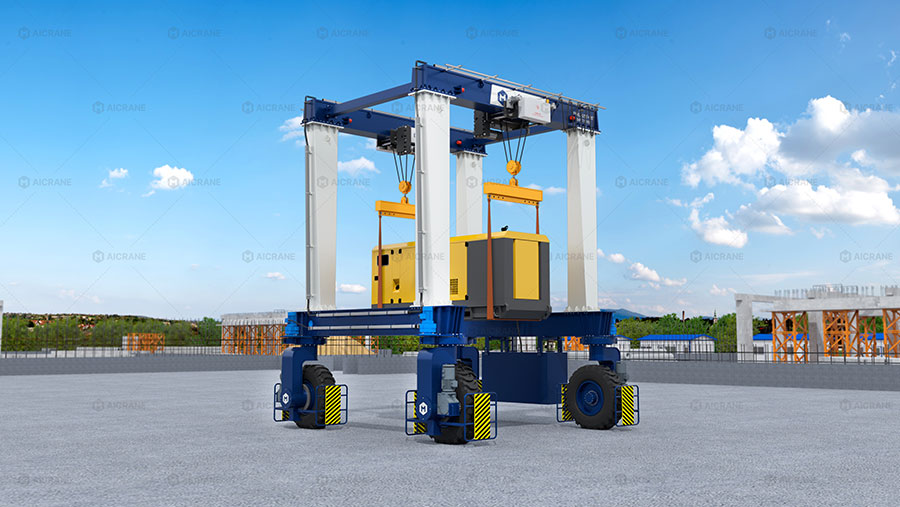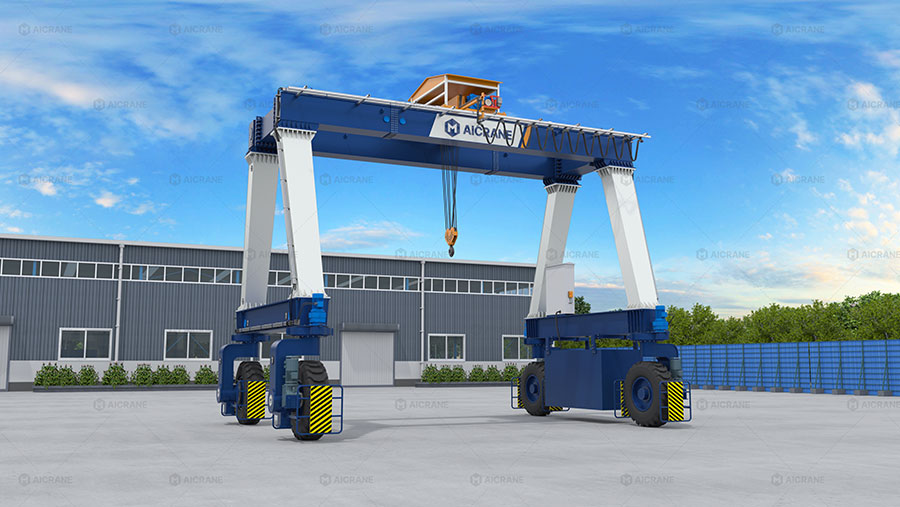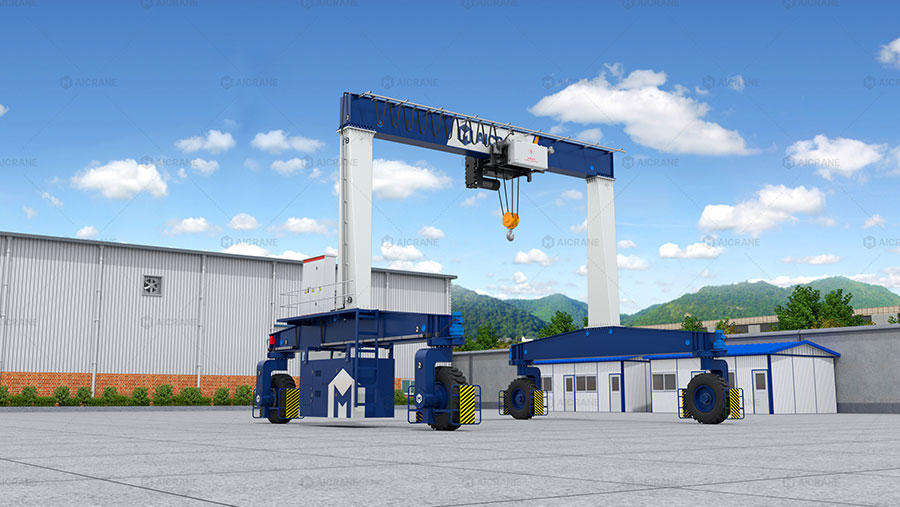Rubber Tyred Gantry (RTG) cranes are vital pieces of mobile lifting equipment used across a wide range of industries such as container terminals, precast concrete plants, construction yards, and wind power equipment handling. One of the key aspects that determines the functionality and adaptability of an RTG crane is its steering mode-the mechanism that allows the crane to move and turn its wheels according to site conditions and operational requirements.
Customers exploring RTG cranes often wonder: “Do steering modes affect the rubber tyred gantry crane price?” The short answer is yes-but the long answer reveals the why, how much, and whether the added cost is justified based on your specific application.
In this article, we will explain the different types of steering modes, how they affect the crane’s engineering complexity and cost, and what buyers should consider when selecting a steering configuration.

Understanding Steering Modes in Rubber Tyred Gantry Cranes
Unlike rail-mounted gantry cranes, RTG cranes operate on rubber tyres and need to steer themselves across flat surfaces. Depending on the mobility requirements, the crane can be equipped with different steering systems. The most common RTG crane steering modes include:
1. Straight Steering (Two-Wheel Steering)
-
Only the front or rear wheels steer, while others remain fixed.
-
Offers basic maneuverability for operations with straightforward travel paths.
-
Lower complexity and lowest cost among all steering types.
2. Four-Wheel Steering
-
Both front and rear wheels can be steered.
-
Provides better cornering and reduced turning radius.
-
Commonly used in medium-sized yards where space is limited.
3. Eight-Wheel Steering
-
All eight wheels can turn in synchronization.
-
Offers excellent mobility in tight or obstacle-dense environments.
-
Allows for crab steering, diagonal movement, and 360° pivot rotation.
4. Omni-Directional or 360-Degree Steering
-
The highest level of maneuverability.
-
Enables the mobile gantry crane to move in any direction without rotating the entire frame.
-
Requires advanced hydraulic or electric steering coordination systems.

How Steering Modes Affect RTG Crane Price
1. Engineering Complexity
The more sophisticated the steering mode, the more complex the design and control systems become. Eight-wheel or 360-degree steering systems require:
-
Precise wheel synchronization mechanisms
-
Additional sensors and actuators
-
A central control system for electronic steering coordination
-
Advanced software and control algorithms
All these systems increase the manufacturing cost, which directly impacts the final price of gantry crane.
2. Hydraulic vs. Electric Steering
-
Hydraulic systems, though powerful, are bulkier and require more maintenance.
-
Electric steering systems offer smoother operation and lower energy consumption but involve high initial investment in motor systems and programmable logic controllers (PLCs).
If your RTG crane requires electronic eight-wheel or 360-degree steering, the price can be significantly higher than a basic two-wheel steered version.
3. Customization Costs
Since high-mobility steering systems are usually custom-engineered to match site layouts, you may incur additional expenses in:
-
Project consultation
-
CAD modeling and 3D simulations
-
On-site testing and commissioning
These added services are often factored into the price of RTG cranes with advanced steering configurations.

Is the Extra Cost Worth It?
The real question is whether the added cost of advanced steering modes delivers proportional operational value. Here’s what to consider:
1. Yard Layout
-
Simple, wide-open yards don’t require eight-wheel or 360° steering. You can save significantly by opting for two- or four-wheel steering.
-
Narrow lanes, obstacle-dense environments, or urban locations benefit greatly from advanced steering configurations.
2. Frequency of Movements
If your RTG crane needs to move frequently or change direction often, an advanced steering mode will:
-
Reduce cycle times
-
Minimize the need for multiple travel maneuvers
-
Lower the risk of accidents or tire wear
3. Labor and Safety Costs
A crane with higher maneuverability can be operated more precisely, leading to:
-
Lower need for ground spotters
-
Reduced risk of equipment or product damage
-
Better alignment with modern automation systems
All these factors can offset the higher upfront cost through long-term operational savings.
Smart Steering with Anti-Slip and Load Stability Systems
Some advanced RTG crane systems integrate anti-slip steering, automatic alignment, and load sway control technologies. While not strictly part of the steering mode, they are often bundled with high-end steering packages.
These additions contribute to:
-
Enhanced load stability during turning
-
Safer travel on uneven terrain
-
Better performance on gradients or sloped surfaces
Naturally, the inclusion of these smart features further increases the price, but also enhances safety and efficiency.
Buyer Tips: How to Decide
-
Conduct a site layout analysis – Determine your available space, turning radii, and movement paths.
-
Request simulation models – Many suppliers offer 3D simulations to show the benefits of different steering modes in your actual yard layout.
-
Think long-term – Consider the total cost of ownership, not just the initial price.
-
Discuss options with the supplier – A professional RTG gantry crane supplier can suggest the most cost-effective configuration based on your operational needs.
Conclusion
Yes, steering modes do affect the price of rubber tyred gantry cranes-sometimes significantly. While a basic two-wheel steering system offers the most budget-friendly option, advanced systems like eight-wheel or 360-degree steering provide superior maneuverability and safety in tight or high-frequency environments.
For buyers, the key is to balance initial investment with long-term productivity, safety, and site compatibility. By carefully evaluating your site conditions and usage frequency, you can choose the right steering mode that justifies its price and delivers maximum return on investment.